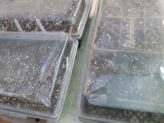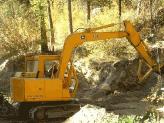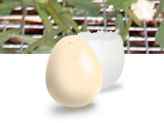- Homesteading
- Best Garden Tools
- Garden Tool Maintenance
Garden Tool Maintenance
Keep Your Tools Sharp, Clean and Well Maintained
I am a participant in the Amazon Services LLC Associates Program, an affiliate advertising program designed to provide a means for me to earn fees by linking to Amazon.com and affiliated sites. Other links on this site may lead to other affiliates that I'm associated with.
Depending on the type of gardening or farming you're doing, your tool collection will morph as you develop your methods and techniques.
All gardeners know that they will only get so far with sup par tools. A rake that has no tines, a shovel that snaps under pressure, and all the other things that go wrong can be avoided with good garden tool maintenance.
If you're looking at starting a tool collection and don't know where to go first, you will need to do some research, and think about what kinds of tools you will use the most.
A good shovel, a rake of some kind, a hoe and a pair of pruners are often the first tools in the tool box.
Garden Tool Maintenance: Essential Care for Longevity and Performance
Proper garden tool maintenance is an investment that pays dividends in both the longevity of your equipment and the quality of your gardening work.
Whether you're a seasoned gardener or just starting out, understanding how to clean, winterize, and sharpen your tools will save you money and frustration while ensuring your garden thrives.
Cleaning: The Foundation of Tool Care
Regular cleaning is the cornerstone of garden tool maintenance.
After each use, remove soil, sap, and plant debris from your tools using a stiff brush or putty knife. For stubborn residue, a solution of warm water and mild dish soap works wonders. Pay special attention to pruning shears and loppers, as plant sap can harbor diseases that spread to healthy plants.
For tools with significant rust or buildup, create a cleaning solution using equal parts water and white vinegar, or use a commercial rust remover.
Let metal parts soak for several hours, then scrub with steel wool or a wire brush.
Once clean, dry all tools thoroughly to prevent rust formation. A final wipe-down with an oily rag or spray of WD-40 creates a protective barrier against moisture.
Don't neglect wooden handles.
Clean them with soapy water, allow them to dry completely, then apply linseed oil or another wood conditioner to prevent cracking and splintering.
This simple step keeps handles comfortable to grip and extends their lifespan significantly.
 A collection of garden tools, including trowels, pruners and shovels, waiting to be cleaned and sharpened on a wooden bench
A collection of garden tools, including trowels, pruners and shovels, waiting to be cleaned and sharpened on a wooden benchWinterizing: Preparing for the Off-Season
As the growing season ends, proper winterization protects your investment during months of storage. Begin with a thorough cleaning as described above, ensuring every tool is completely dry before storage.
Apply a light coat of oil to all metal surfaces—this includes blades, springs, and any moving parts. For larger tools like shovels and hoes, some gardeners dip them in a bucket of sand mixed with motor oil, which both cleans and protects in one step.
Inspect wooden handles for damage. If your tools have a label from when you bought them, remove the label and look underneath. I've had significant defects under the label, which impacted the use of the tool.
Sand any rough spots and apply a generous coat of linseed oil, allowing it to penetrate the wood. Check for loose heads or handles and tighten or repair them before storage.
Store tools in a dry location, preferably hanging on a wall or pegboard to keep them off damp floors.
This prevents rust and makes spring preparation easier. For added protection in humid climates, consider using silica gel packets or a dehumidifier in your storage area.
Sharpening: Maintaining Peak Performance
Sharp tools make gardening easier and produce cleaner cuts that help plants heal faster. Pruning shears, loppers, hoes, and spade edges all benefit from regular sharpening.
For pruning tools, use a whetstone or diamond file, maintaining the original bevel angle (typically 20-30 degrees).
Sharpen only the beveled edge, making smooth strokes away from your body. After sharpening, remove any burrs from the flat side with a few light passes.
Larger tools like hoes and spades can be sharpened with a mill bastard file. Secure the tool in a vise if possible, and file at the original angle using smooth, even strokes.
A sharp spade cuts through soil and roots effortlessly, reducing strain on your back and arms.
By dedicating time to these maintenance tasks, you'll ensure your garden tools remain reliable companions for years to come, ready to help you season after season.















